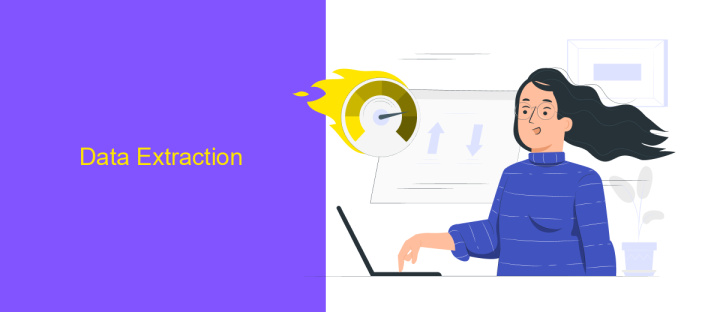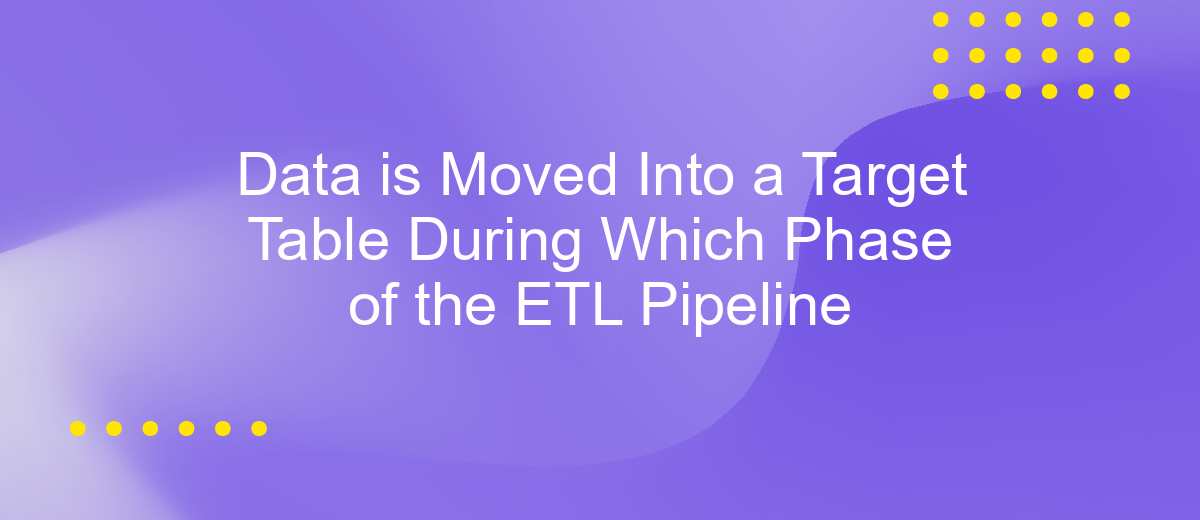Data is Moved Into a Target Table During Which Phase of the ETL Pipeline
In the realm of data management, the ETL (Extract, Transform, Load) pipeline plays a crucial role in ensuring data integrity and accessibility. One pivotal phase of this process involves moving data into a target table. This article explores the intricacies of this phase, shedding light on its significance and the steps involved in ensuring efficient data migration.
Introduction
The ETL (Extract, Transform, Load) pipeline is a crucial process in data management and analytics. It involves extracting data from various sources, transforming it into a suitable format, and loading it into a target table or data warehouse. Understanding the phase in which data is moved into the target table is essential for optimizing performance and ensuring data integrity.
- Extraction: Data is collected from multiple sources.
- Transformation: Data is cleaned, enriched, and formatted.
- Loading: Data is transferred into the target table.
During the loading phase, tools like ApiX-Drive can be incredibly useful. ApiX-Drive facilitates seamless integration between various data sources and target systems, ensuring that the data transfer process is smooth and error-free. By automating these tasks, ApiX-Drive helps organizations save time and resources, allowing them to focus on data analysis and decision-making.
Data Extraction

Data extraction is the initial phase of the ETL (Extract, Transform, Load) pipeline, where raw data is collected from various sources such as databases, APIs, and flat files. This phase is crucial as it lays the foundation for all subsequent data processing activities. The quality and structure of the extracted data significantly impact the efficiency and accuracy of the entire ETL process. Effective data extraction involves the use of specialized tools and techniques to ensure that data is accurately captured and made ready for transformation and loading.
One of the key challenges in data extraction is dealing with diverse data formats and sources. To address this, integration services like ApiX-Drive can be employed. ApiX-Drive simplifies the process by providing a user-friendly interface to set up and manage data integrations without the need for extensive coding. It supports a wide range of data sources and ensures seamless data flow, thereby enhancing the reliability and speed of the extraction process. Utilizing such services can significantly streamline the initial phase of the ETL pipeline, making it more efficient and less error-prone.
Data Transformation

Data transformation is a critical phase in the ETL (Extract, Transform, Load) pipeline, where raw data is converted into a format suitable for analysis and reporting. This process involves various techniques to clean, standardize, and integrate data from multiple sources, ensuring consistency and accuracy.
- Data Cleaning: Removing duplicates, correcting errors, and dealing with missing values.
- Data Standardization: Converting data into a common format or structure.
- Data Integration: Combining data from different sources into a unified dataset.
- Data Enrichment: Enhancing data with additional information from external sources.
- Data Aggregation: Summarizing data to provide a higher-level view.
Effective data transformation ensures that the target table receives high-quality, reliable data, which is crucial for accurate analysis and decision-making. Tools like ApiX-Drive can facilitate this process by automating data integration and transformation tasks, allowing for seamless connectivity between various data sources and systems. This automation reduces manual effort and minimizes the risk of errors, making the ETL pipeline more efficient and robust.
Data Loading

Data loading is a critical phase in the ETL (Extract, Transform, Load) pipeline, where transformed data is finally moved into the target table. This step ensures that the data is readily available for analysis, reporting, and other business intelligence activities. It is essential to perform data loading efficiently to maintain data integrity and performance.
During the data loading phase, various strategies can be employed depending on the volume of data and the system's requirements. These strategies include full load, incremental load, and batch load. Selecting the appropriate strategy is crucial for optimizing the ETL process.
- Full Load: Entire dataset is loaded into the target table, often used for initial loads.
- Incremental Load: Only new or changed data is loaded, reducing the load on the system.
- Batch Load: Data is loaded in batches at scheduled intervals, balancing load and performance.
Tools like ApiX-Drive can facilitate data integration and automation, streamlining the data loading process. ApiX-Drive allows for seamless integration between various data sources and target systems, ensuring that the data is consistently and accurately loaded into the target table. This helps organizations maintain up-to-date and reliable data for their analytical needs.


Data Validation
Data validation is a critical step in the ETL process to ensure the accuracy and quality of data before it is moved into the target table. This phase involves a series of checks and verifications to confirm that the data complies with predefined standards and business rules. Common validation tasks include verifying data types, checking for missing or null values, and ensuring that data falls within acceptable ranges. These validations help in identifying and rectifying errors early in the pipeline, thus maintaining the integrity of the data.
Integrating data from various sources can introduce inconsistencies and errors. Tools like ApiX-Drive facilitate seamless integration and provide robust data validation features. ApiX-Drive allows users to set up automated workflows that include validation rules, ensuring that only clean and accurate data is transferred into the target table. By leveraging such services, organizations can streamline their ETL processes, reduce manual intervention, and enhance the reliability of their data pipelines.
FAQ
What is the ETL pipeline?
During which phase of the ETL pipeline is data moved into the target table?
Why is the Load phase important in the ETL process?
What challenges can occur during the Load phase of the ETL process?
How can automation tools like ApiX-Drive help with the ETL process?
Do you want to achieve your goals in business, career and life faster and better? Do it with ApiX-Drive – a tool that will remove a significant part of the routine from workflows and free up additional time to achieve your goals. Test the capabilities of Apix-Drive for free – see for yourself the effectiveness of the tool.

